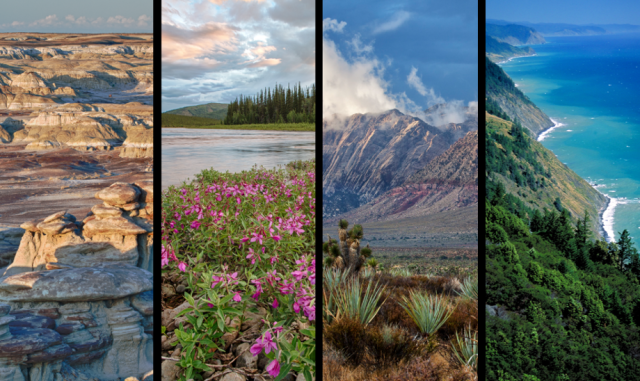Visual Resource Management
The BLM manages an array of diverse and unique landscapes. These include deserts, forests, mountains, canyons, grasslands, and coastal areas.
Landscapes like these have what's called scenic value, based on their inspiration, beauty, and natural and cultural significance. They are important to people in many ways, especially as places to create and build meaningful, lifelong experiences. These scenic landscapes also...
- contribute to improved health and well-being.
- support local and regional economies through tourism.
- influence cultural identity and connection to place.
- strengthen connections within communities.
The BLM's Role
The BLM's mission is to sustain the health, diversity, and productivity of public lands for the use and enjoyment of present and future generations.
The BLM manages public lands for a variety of uses. These include energy development, livestock grazing, recreation, and timber harvesting.
The bureau also has the responsibility to manage lands in a manner that will protect the quality of scenic values. The Federal Land Policy Management Act of 1976 and the National Environmental Policy Act of 1969 are central to this responsibility.
Sometime, uses such as natural resource and energy development can compete with other public interests, like the protection of scenic landscapes.
The BLM Visual Resource Management program
To bridge the gap between these competing interests, the Visual Resource Management program provides tools to help protect the quality of scenic values for present and future generations.
The VRM program provides a system for:
- inventorying scenic values.
- projecting the present and future use of these values through land use planning.
- minimizing visual impacts from proposed projects or activities through project planning practices and visual design principles.
Visual Design Principles
- proper siting and location of projects
- minimizing disturbance
- responsive to the ecological, cultural and landscape character influences of a region.
The VRM program is housed within the Division of Recreation and Visitor Services and crosses all resource programs and use administered by the BLM.

